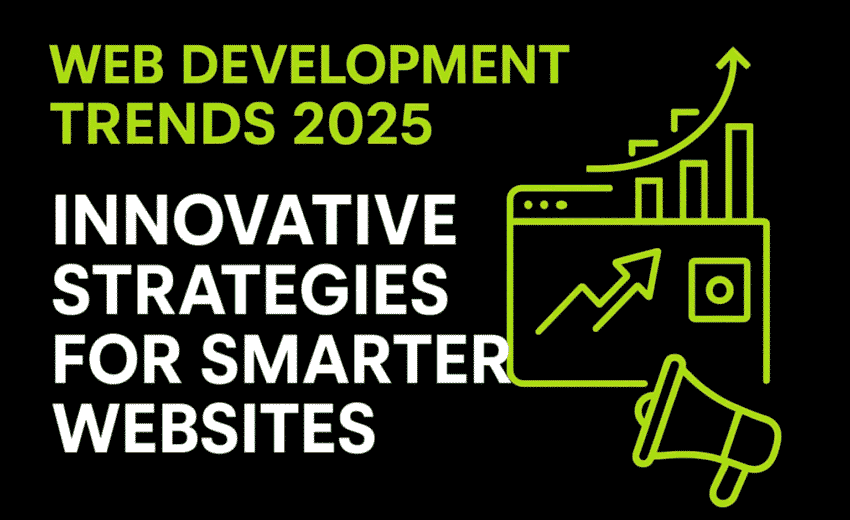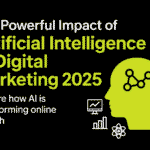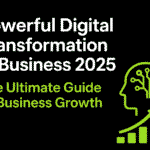
Explore the top Web Development Trends 2025 including AI, no-code platforms, PWAs, voice search, cybersecurity, Web3, and user-focused design strategies.
Introduction
Technology never stands still. Every year brings new tools, frameworks, and user expectations that redefine how websites are built and experienced. In 2025, web development has shifted from static designs to AI-driven, interactive, and secure platforms.
Businesses that adopt the latest Web Development Trends 2025 will not only provide better user experiences but also gain higher visibility on search engines and stronger customer trust.
This guide covers innovative strategies that developers, agencies, and business owners can implement to build smarter websites that thrive in the digital future.
Why Web Development Trends Matter in 2025
A website is the digital storefront of any business. Outdated designs, clunky interfaces, and poor security don’t just hurt engagement they cost sales.
According to the Forbes Technology Council, businesses that invest in modern web design see up to 35% higher conversion rates. Following the right Web Development Trends 2025 ensures that your site meets modern expectations and outpaces competitors.
Top Web Development Trends in 2025
1. AI-Powered Websites & Automation
Artificial intelligence is shaping the future of web development. From personalized experiences to automated workflows, AI-driven websites are smarter and more efficient.
Examples in action:
- Chatbots: AI bots on sites like e-commerce platforms answer FAQs instantly.
- Smart recommendations: Amazon uses machine learning to tailor shopping suggestions.
- AI-generated content: Tools like Jasper and ChatGPT create blogs, emails, and even landing page copy.
Action Steps:
- Integrate AI chatbots for round-the-clock customer support
- Use AI-driven SEO audits for optimization
- Test AI-powered heatmaps to analyze user behavior
2. No-Code & Low-Code Platforms
The rise of no-code/low-code platforms is democratizing web development. Tools like Webflow, Wix, and Bubble allow non-developers to build professional websites quickly.
Benefits for 2025:
- Faster project turnaround
- Reduced development costs
- Empowering startups and small businesses
Pro Tip: Even professional developers use no-code tools to prototype ideas before custom coding.
3. Progressive Web Apps (PWAs)
PWAs are websites that act like mobile apps—fast, reliable, and installable. They bridge the gap between mobile-first users and traditional web browsing.
Why PWAs matter:
- Work offline or on weak connections
- Load instantly with cached data
- Improve user engagement with push notifications
Case Study: Twitter Lite (a PWA) reduced bounce rates by 20% and saw a 65% increase in pages per session.
4. Voice Search Optimization
Voice assistants like Siri, Alexa, and Google Assistant are driving voice-first browsing. By 2025, over 55% of online searches are expected to be voice-based.
How to optimize for voice:
- Use conversational keywords (“Where can I buy running shoes near me?”)
- Add FAQ sections with direct answers
- Implement schema markup for better recognition
5. Cybersecurity as a Priority
Cyberattacks are increasing, making security-first development a necessity. Customers expect websites to protect their personal information.
Best practices for 2025:
- Always use SSL certificates (HTTPS)
- Implement two-factor authentication (2FA)
- Encrypt sensitive user data
- Regularly test for vulnerabilities
Example: After several e-commerce breaches in 2023–24, many online stores now use biometric logins to boost trust.
6. Dark Mode & Minimalist Interfaces
User experience is driving UI design trends in 2025. Dark mode reduces eye strain and conserves battery on OLED devices, while minimalist designs improve navigation.
Action Steps:
- Offer dark/light toggle options
- Use clean layouts with whitespace
- Focus on accessibility (contrast, readability)
7. Web3 & Blockchain Integration
Decentralization is one of the biggest Web Development Trends 2025. Blockchain-based websites offer greater transparency, ownership, and security.
Use Cases:
- Smart contracts for transactions
- Decentralized identity verification
- Crypto payment integration
Emerging Innovations in Web Development 2025
Augmented & Virtual Reality Experiences
From real estate tours to product try-ons, AR/VR is reshaping how users interact online.
Headless CMS Adoption
Headless CMS (like Strapi or Contentful) separates content from design, giving developers faster delivery and flexibility across devices.
Green & Sustainable Hosting
Eco-conscious web development is growing. Green hosting providers use renewable energy to reduce carbon footprints.
Real-World Examples of Web Development Trends 2025
- Nike uses AR-powered apps to let customers try sneakers virtually.
- Starbucks implemented a PWA that boosted online orders in low-network areas.
- Tesla integrates AI-powered personalization for users browsing their vehicles online.
Common Mistakes Businesses Make
Even with trends available, many businesses fall behind because of:
- Ignoring mobile-first optimization
- Using outdated CMS or frameworks
- Slow site speed (over 53% of visitors leave if a page takes 3+ seconds)
- Poor accessibility compliance (non-ADA-friendly designs can lead to lawsuits)
Step-by-Step Action Plan for 2025
- Audit your website for speed, mobile optimization, and security.
- Adopt AI tools for smarter content and personalization.
- Upgrade to PWAs if your site has a large mobile audience.
- Optimize for voice search to stay ahead of browsing shifts.
- Strengthen cybersecurity with modern practices.
- Test designs for accessibility, dark mode, and minimalist layouts.
- Prepare for Web3 integration in future digital ecosystems.
Internal & External Links
- Internal Link: Read our SEO Strategies 2025 Guide.
- Internal Link: Explore Content Marketing Trends 2025.
- External Link: Check Smashing Magazine for web development insights.
Conclusion
The Web Development Trends 2025 prove one thing: websites are becoming smarter, faster, and more secure. From AI-powered automation to Web3 decentralization, businesses that adopt these innovations will lead the digital landscape.
Whether you’re a developer, entrepreneur, or digital marketer, embracing these strategies ensures your website stays competitive, engaging, and future-ready.
The future of the web isn’t coming—it’s already here. The only question is: Are you ready to keep up?






